In the dynamic landscape of smartphones, the 2023 Moto Razer Plus, also recognized as the Razer 40 Ultra in Europe, brings a fresh perspective to the world of folding phones. This device, known simply as the Razer Plus in the United States, is making waves with its enticing features and a unique approach to the folding phone concept. In this comprehensive exploration, we’ll delve into its design, specifications, pricing, and how it stands against its formidable competitor, the Samsung Galaxy Z Flip 4.
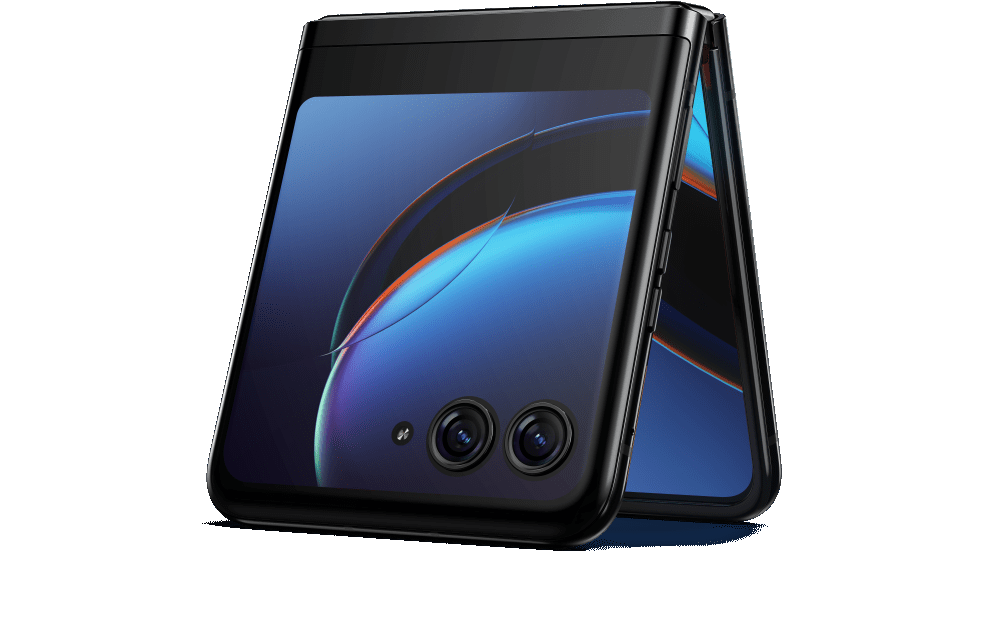
A Glimpse of the Outer Display and Pricing:
Outer Display Dynamics:
One of the standout features of the Moto Razer Plus is its 3.6-inch outer display, boasting a resolution of 1065 by 1056 pixels. This outer display is a game-changer, addressing a common concern with flip-style phones – the usability of the outer screen. Its dimensions, while seemingly modest, make it as large as the original iPhone, albeit with a different aspect ratio.

Pricing and Color Variants:
With a price tag of $999, the Moto Razer Plus competes in the upper echelons of the smartphone market. It comes in three captivating colors: black, glacial blue (noteworthy for its elegant light blue shade, although availability might be limited), and magenta (featuring a vegan leather back instead of a traditional glass back).

Aesthetic and Build Quality:
The rear section of the phone, excluding the display, is crafted from Gorilla Glass Vector with a matte or frosted glass finish. This finish not only adds a touch of elegance but also provides a grippy texture, enhancing the device’s overall handling. The absence of a bundled case in the package underscores the confidence in the device’s build quality and durability.
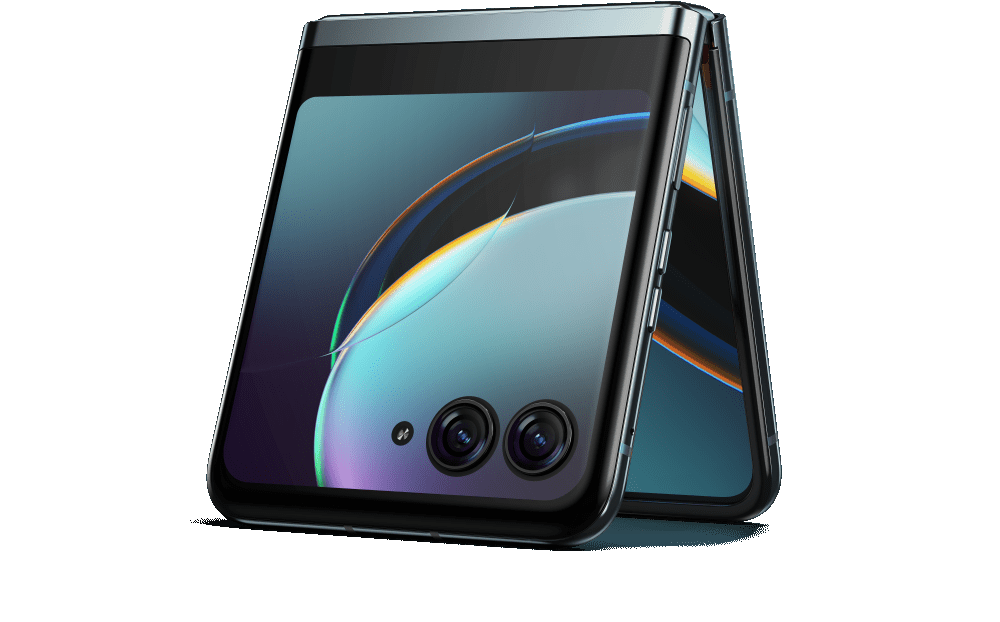
Navigating the Competitive Landscape:
Samsung Galaxy Z Flip 4 Comparison:
Acknowledging the looming presence of the Samsung Galaxy Z Flip 4, it’s inevitable to draw comparisons between the two foldable contenders. The Moto Razer Plus distinguishes itself with a unique hinge design – the teardrop style. This design allows the device to fold completely flat, addressing a specific user preference. Rumors circulating about the Galaxy Z Flip 5 also adopting a similar flat-folding mechanism highlight the significance of this feature in the evolving foldable phone market.
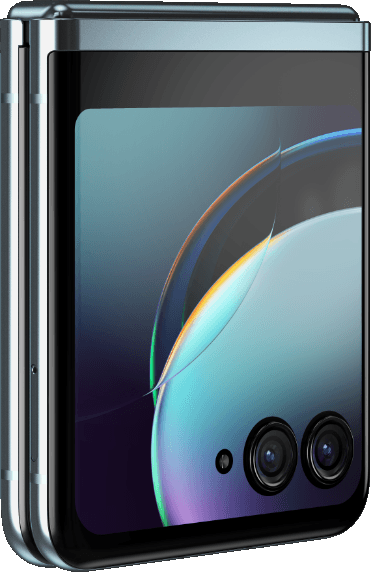
Hinge Design and Durability:
The teardrop-style hinge not only facilitates a seamless folding experience but also minimizes the risk of foreign particles getting trapped inside. An additional feather in the Moto Razer Plus’s cap is its IP52 dust and water resistance. While Samsung’s folding phones, like the Galaxy Z Flip 4, boast a higher IPX8 water resistance rating, Moto’s focus on dust resistance is a notable advantage. The vulnerability of foldable screens to dust particles is a well-documented concern, and Moto’s IP52 rating addresses this potential issue effectively.

Practical Usage and Display Durability:
The Moto Razer Plus, building on the legacy of the Razr series, prioritizes practical usage scenarios. The phone’s design allows it to resist raindrops, splashes, and typical water exposure around sinks. While it might not withstand submersion like its Samsung counterparts, this level of water resistance is deemed sufficient for everyday usage.

A Word on Durability:
An intriguing aspect that emerges from user experiences and forums is the perceived durability of the Moto Razr series compared to Samsung’s foldable offerings. Instances of display issues, particularly near the hinge, have been reported by some Samsung users, while the Moto Razr series seems to exhibit fewer such concerns. However, it’s essential to note that the comparative lower user base might contribute to this observation.

The Moto Razer Plus enters the competitive arena of folding phones with a compelling set of features. Its flat-folding design, dust resistance, and vibrant outer display contribute to its appeal. However, the shadow of Samsung’s Galaxy Z Flip 4 and upcoming Z Flip 5 looms large, posing a formidable challenge. As the Moto Razer Plus strives to carve its niche, its success will hinge on consumer preferences, the evolution of the foldable phone market, and its ability to stand out in an increasingly crowded field. Whether it can disrupt the duopoly dominated by Samsung and Apple in the United States remains an intriguing aspect to watch in the unfolding chapters of smartphone innovation.
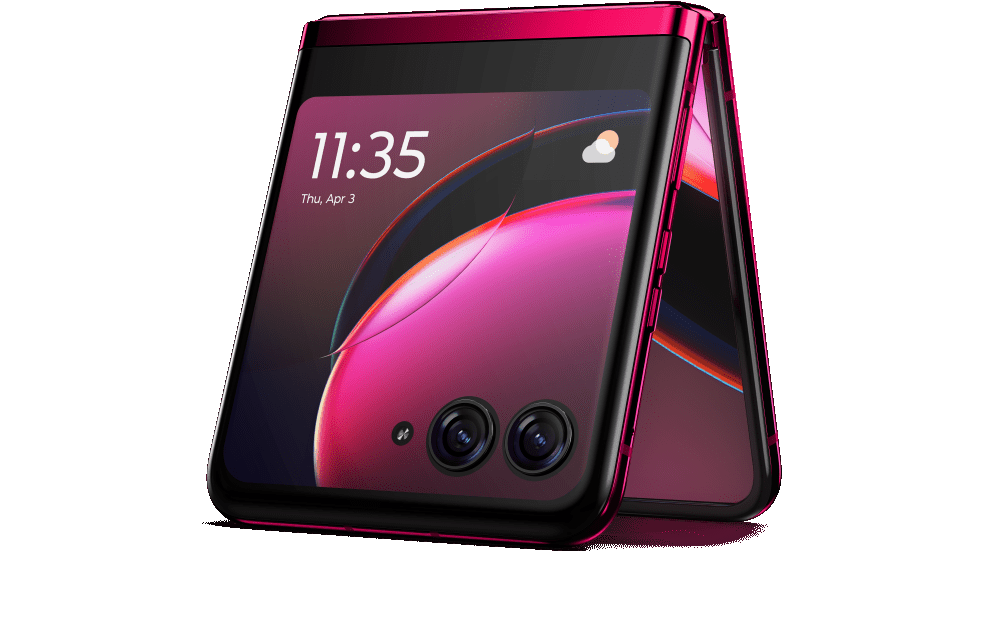
The Moto Razer Plus, also known as the Razer 40 Ultra in Europe, has entered the smartphone arena with a promising array of features and a unique take on foldable phone design. In this in-depth exploration, we’ll delve into the device’s inner and outer displays, its practical use cases, the software experience, availability in the United States, audio capabilities, and performance, providing a holistic perspective on what this foldable phone brings to the table.

Display Dynamics: Inner and Outer Screens
The Moto Razer Plus boasts a flexible foldable glass inner display, measuring a generous 6.9 inches. This makes it currently one of the largest foldable phone displays available, particularly in the United States. The full HD Plus resolution on the inner display enhances the visual experience, providing crisp and vibrant visuals.

Outer Display Utility: Beyond Gaming and Widgets
While the inner display offers an immersive experience, the outer display, measuring 3.6 inches, serves a unique purpose. Notably, Moto has optimized the outer display to run various applications, including five games tailored for this screen size. Additionally, the inclusion of practical widgets like a calendar and weather widget enhances usability. What sets the outer display apart is its versatility – it functions as an Android launcher screen, accommodating most apps effectively.

Usability Convenience: Messaging and Notifications
The outer display’s compact size doesn’t limit its usefulness. Moto’s approach aligns with the philosophy of the foldable phone – providing convenience for users who don’t want to be constantly glued to their device. The outer screen proves handy for quick tasks such as messaging, checking notifications, and even running certain apps without the need to fully open the phone.
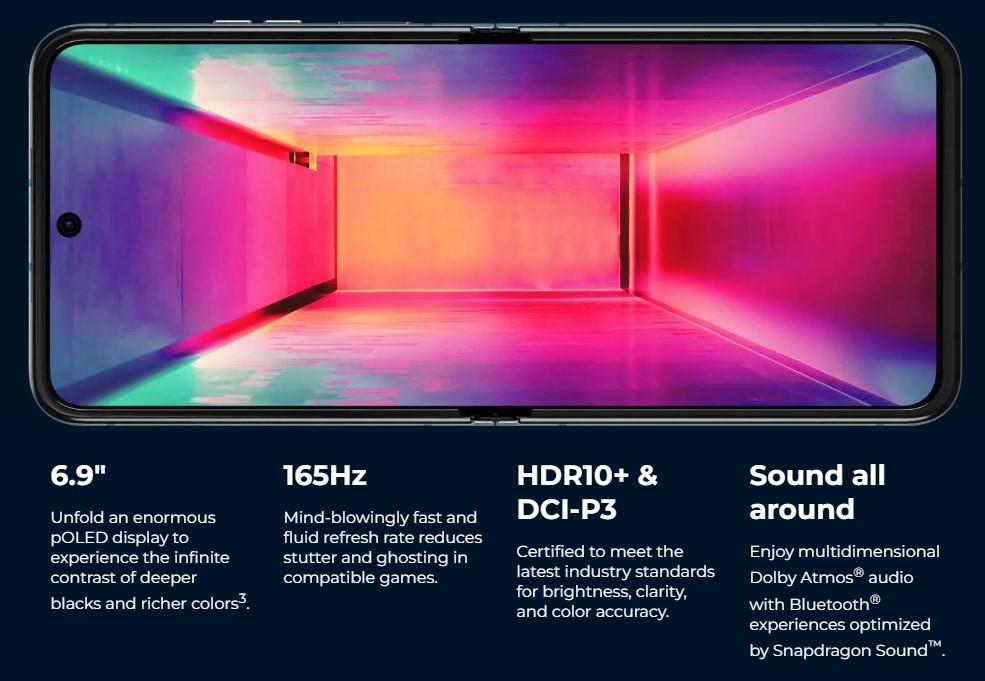
Software Experience: A Thoughtful Approach
Moto’s software design for the Razer Plus stands out for its thoughtful approach. Instead of inundating users with every conceivable feature, the software focuses on enhancing the overall user experience. The user-friendly interface allows easy customization of which apps run on the outer screen, and transitions between the inner and outer displays are seamlessly integrated. The software’s intuitive nature contributes to the phone’s overall appeal.

Availability and Connectivity: Unlocked Options and Carrier Support
In the United States, consumers can acquire the Razer Plus directly from Moto, Best Buy, or Amazon. Notably, T-Mobile and AT&T are among the carriers offering this foldable device. It supports 5G sub-six connectivity but lacks millimeter-wave support, a key factor preventing direct sales by Verizon due to their specific 5G requirements. While the absence of millimeter-wave might limit carrier options, the sub-six connectivity ensures reliable 5G performance in supported areas.

Audio Features: Stereo Speakers and Bluetooth Connectivity
In the audio department, the Moto Razer Plus incorporates decent stereo speakers. The inclusion of Dolby Atmos software enhances the audio experience, particularly when using peripherals. However, the absence of a headphone jack means users will rely on Bluetooth for audio connectivity.

Performance and Battery Life: Striking a Balance
Equipped with the Qualcomm Snapdragon 8 Plus Gen 1, the Moto Razer Plus finds itself on par with the Samsung Galaxy Z Flip 4 in terms of processing power. While it may not boast the latest cutting-edge CPU, the Snapdragon 8 Plus Gen 1 delivers sufficient performance for gaming and multitasking. The focus here isn’t necessarily on raw power but rather on ensuring the device meets the demands of everyday usage.
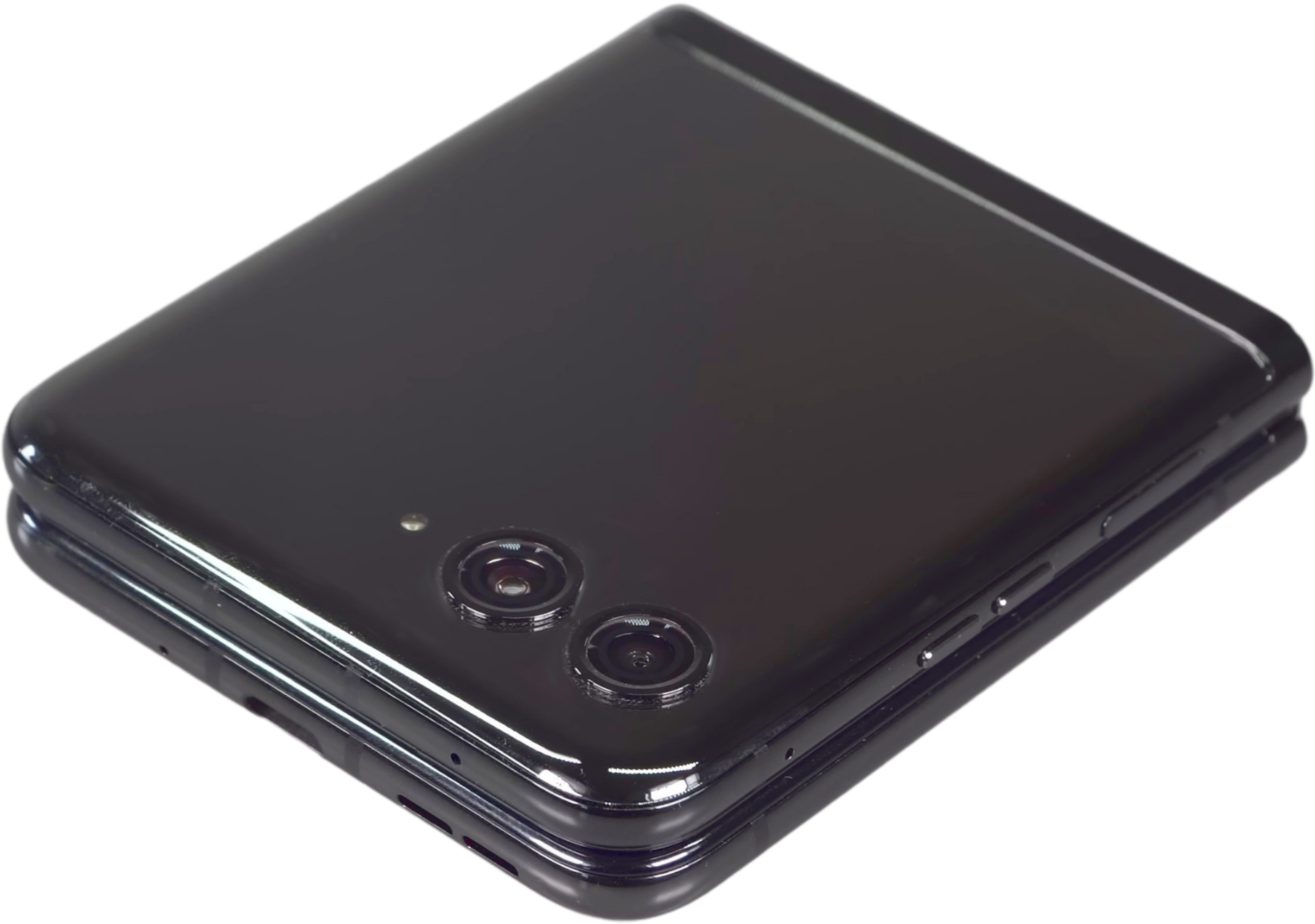
Battery Life Surprises: Overcoming Foldable Phone Stereotypes
Considering the 3,800 milliamp battery, a modest capacity common in foldable phones, the Razer Plus pleasantly surprises with its battery life. Foldable phones often face challenges in this department, but Moto seems to have struck a commendable balance. While the Snapdragon 8 Plus Gen 1 may not showcase the latest power efficiency improvements, the device manages to offer better-than-expected battery life.

The Moto Razer Plus enters the competitive foldable phone market with a thoughtful design, practical features, and a focus on user experience. Its blend of a sizable inner display, versatile outer screen, and well-crafted software contributes to a compelling package. As it competes with the Samsung Galaxy Z Flip 4 and other contenders, the Razer Plus seeks to carve a niche for users seeking a balance between innovation and usability. Whether it can disrupt the established duopoly in the United States smartphone market remains to be seen, but its unique approach to foldable design and user-centric features make it a device worth considering for those intrigued by the evolving world of foldable smartphones.
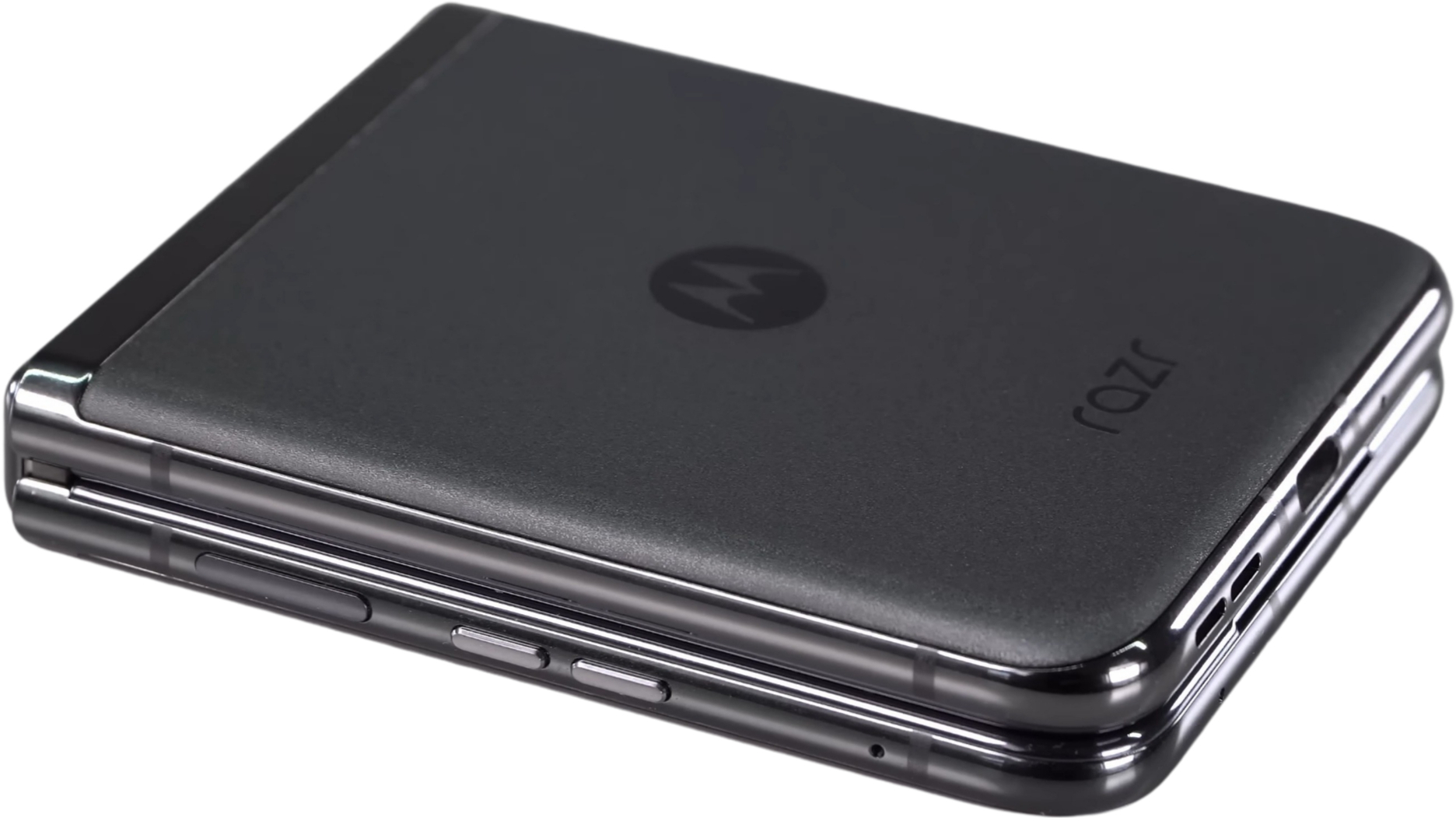
In the ever-evolving landscape of smartphones, the Moto Razer Plus has emerged as a distinctive contender, offering a unique take on foldable phone design. As we embark on a detailed exploration of this device, we’ll scrutinize its battery life, performance, connectivity features, and delve into the intricacies of its camera system. Additionally, we’ll draw comparisons with its competitors, such as the Z Flip 4, and assess how the Razer Plus stacks up in the current market.

Battery Life and Charging Capabilities: A Day’s Companion
The Moto Razer Plus boasts impressive battery life, effortlessly enduring a day of extensive usage. Engaging in activities typical of a phone review, such as capturing numerous photos and videos, utilizing GPS, and indulging in gaming sessions, did not pose a challenge for the device’s battery longevity. Notably, the absence of a Screen On Time metric is acknowledged, as Android primarily tracks the main display, overlooking the usage on the outer display. This nuanced approach might contribute to the device’s better-than-expected battery life, as the outer display remains functional for various tasks, eliminating the need to constantly open the phone.

Charging the device is facilitated by 30-watt Turbo fast charging, according to Motorola. While the absence of an included charger aligns with industry trends, the device supports Qi wireless charging at a relatively slow rate of five watts. Despite the leisurely pace of wireless charging, it serves as a convenient option for overnight charging.
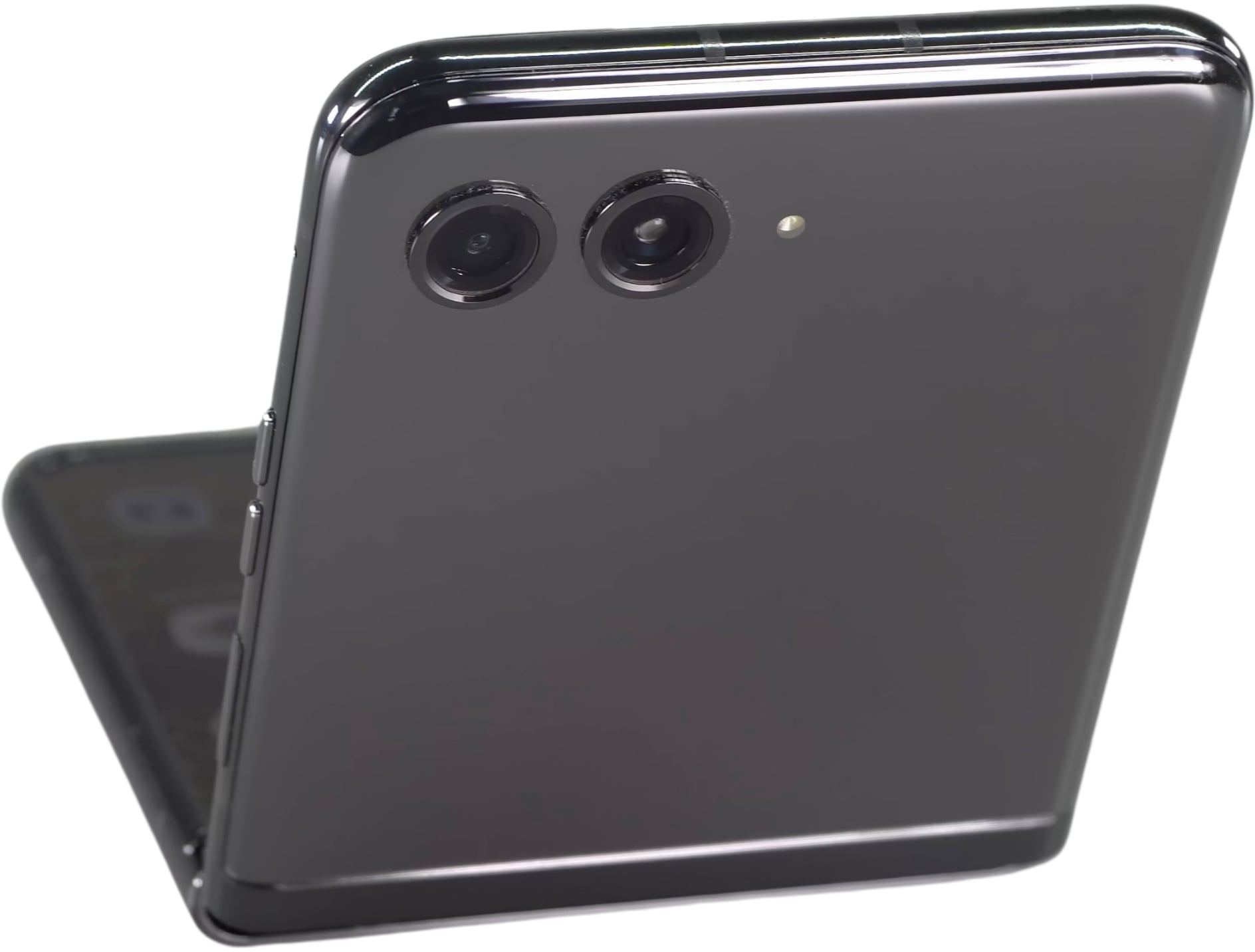
Hardware Specifications: Balanced and Adequate
Equipped with 8 gigabytes of RAM and 256 gigabytes of storage, the Moto Razer Plus offers a robust hardware configuration. The absence of a microSD card slot, a rarity in modern smartphones, is noted. However, the provided specifications are deemed sufficient for the majority of users. Standard features such as Bluetooth 5.3, Wi-Fi 6E, and NFC are present, with Google Wallet compatibility. The inclusion of a fingerprint scanner in the narrow power button and facial unlocking options enhances the device’s security and accessibility.
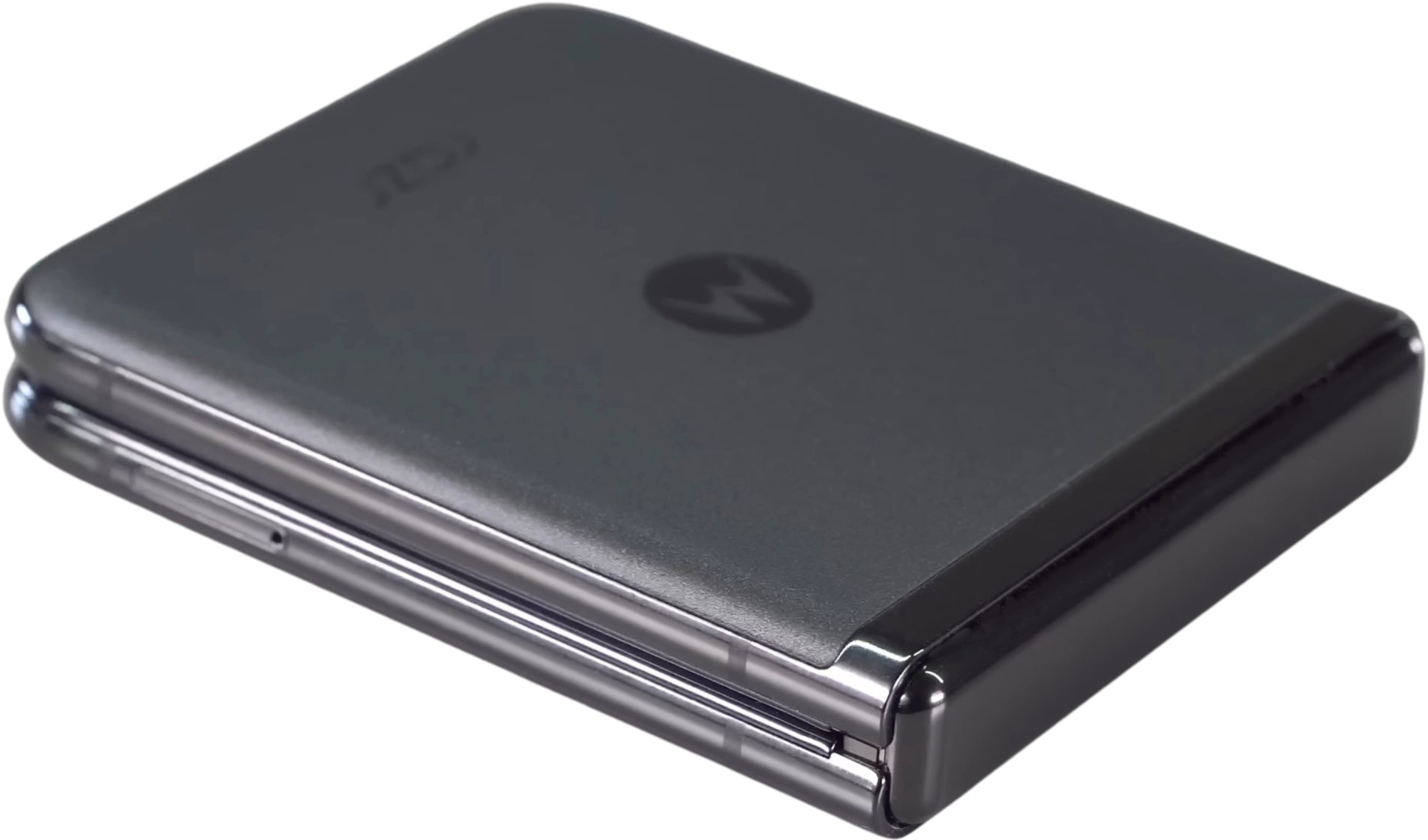
Camera System: A Mixed Bag
The camera system on the Moto Razer Plus comprises two cameras, with a 32-megapixel selfie camera on the inside and a 12-megapixel main camera with Optical Image Stabilization (OIS) and a 13-megapixel ultra-wide camera on the outside. While the camera setup is not groundbreaking, it provides satisfactory performance for everyday photography and videography. The device supports 4K video recording with both inner and outer cameras at 30 frames per second, offering flexibility in capturing high-quality content.

Moto’s implementation of HDR and various effects occasionally exhibits inconsistencies, with a tendency for over-sharpening in certain scenarios. Despite occasional discrepancies, the camera system delivers acceptable results, especially in well-lit environments. The low-light performance, while not exceptional, meets expectations.
A noteworthy software feature is the ability to display the subject on the outer screen while taking a photo, enhancing the overall photography experience.
Comparative Analysis: Moto Razer Plus vs. Z Flip 4
Drawing comparisons with its competitors, particularly the Z Flip 4, the Moto Razer Plus emerges as a strong contender. Priced similarly, the Razer Plus offers a larger inner display and a highly functional outer display, setting it apart in terms of usability. The inclusion of dust resistance and a flat-closing design further adds to its appeal.
Anticipating the release of the Z Flip 5, it is essential to consider potential enhancements such as a flat-folding hinge design. However, rumored compromises, including a larger but lower-resolution outer display, warrant caution. The Moto Razer Plus, in this context, stands out as a compelling choice, especially considering its current competitive pricing.
In short, in this comprehensive evaluation of the Moto Razer Plus, it is evident that the device brings a thoughtful blend of design, functionality, and performance to the table. While not aiming to compete with flagship camera phones, it excels in offering a unique foldable experience with practical features and a balanced hardware configuration.
As the smartphone market continues to evolve, the Moto Razer Plus serves as a testament to the growing diversity in form factors and user experiences. While the decision to embrace foldable technology remains subjective, the Razer Plus caters to those seeking innovation without compromising usability. The device’s success in the market will likely influence the trajectory of foldable phones, providing users with an expanding array of choices in the ever-evolving world of smartphones.
Moto Razr+ (2023): A Comprehensive Analysis of Pros and Cons
The Moto Razr+ (2023) has generated considerable interest in the smartphone market, showcasing a distinctive foldable design and an array of features. In this in-depth analysis, we will explore the device’s strengths and weaknesses to provide consumers with valuable insights into its overall performance.
Pros:
1. Innovative Foldable Design:
- The Moto Razr+ features an innovative foldable design that sets it apart from traditional smartphones.
- The foldable form factor provides a unique and compact solution for users seeking a balance between portability and screen real estate.
2. Functional Outer Display:
- The device boasts a 3.6-inch outer display with a resolution of 1065 by 1056 pixels.
- The outer display is functional, allowing users to run various apps and perform tasks without fully opening the phone, enhancing convenience.
3. Durable Build:
- Constructed with Gorilla Glass Vector on both the front and back, the device offers a durable and premium feel.
- The matte or frosted glass finish adds grip, contributing to a secure hold in hand.
4. Dust and Water Resistance:
- With an IP52 rating, the Moto Razr+ provides resistance against dust and water, offering durability and protection against common environmental factors.
5. Impressive Battery Life:
- Despite the challenges posed by foldable phones in terms of battery life, the Moto Razr+ excels with impressive endurance, easily lasting through a day of diverse usage.
6. 30-Watt Turbo Fast Charging:
- The device supports 30-watt Turbo fast charging, facilitating quick replenishment of the battery.
- Fast charging capabilities enhance user convenience, ensuring minimal downtime.
7. Solid Performance:
- Powered by a capable processor, the Moto Razr+ delivers satisfactory performance for everyday tasks, gaming, and multimedia consumption.
- The 8GB RAM and 256GB storage configuration contributes to smooth multitasking and ample storage space.
8. Usable Outer Display for Various Tasks:
- The outer display supports a range of activities, including messaging, notifications, and even gaming, without the need to fully open the phone.
9. Well-Designed Fingerprint Scanner:
- The inclusion of a fingerprint scanner in the narrow power button enhances device security and provides a convenient unlocking method.
10. Facial Unlocking for Convenience:
- Facial unlocking features on both the inner and outer displays offer users an additional, convenient method of device access.
Cons:
1. Limited Camera Capabilities:
- The Moto Razr+ camera system, while functional, may not match the photography standards set by flagship camera phones.
- Some inconsistencies in HDR processing and occasional over-sharpening might affect image quality.
2. No MicroSD Card Slot:
- The absence of a microSD card slot limits expandable storage options for users who may prefer additional external storage.
3. Slow Qi Wireless Charging:
- While Qi wireless charging is supported, the device’s five-watt charging speed may be considered slow for users accustomed to faster wireless charging technologies.
4. Bluetooth Audio Only:
- The exclusion of a headphone jack limits audio connectivity options, requiring users to rely on Bluetooth audio devices.
5. Hinge Design Considerations:
- While the foldable hinge design contributes to a flat closing device, some users may prefer alternative hinge designs adopted by competitors.
6. Pricing Concerns:
- The device’s pricing, while competitive, may be a consideration for users comparing it to other foldable or non-foldable alternatives in a similar price range.
7. Potential Outer Display Fragility:
- Foldable phones, in general, may be prone to issues related to the durability of outer displays, necessitating careful handling to prevent damage.
8. Dependency on Android Ecosystem:
- The reliance on the Android ecosystem brings with it the challenges associated with frequent updates, ensuring compatibility, and managing potential bloatware.
9. Subjective Preference for Foldable Design:
- The foldable design, while innovative, remains a subjective preference, and some users may prioritize traditional smartphone designs over foldable alternatives.
10. Possible Software Tweaks:
- While the software experience is generally intuitive, there may be room for additional software tweaks to further enhance user comfort and customization.
Conclusion:
The Moto Razr+ (2023) stands out as a commendable entrant in the foldable smartphone category, offering a blend of innovation and practicality. Its unique design, functional outer display, and solid performance contribute to a positive user experience. However, considerations such as camera capabilities, charging speeds, and personal preferences for foldable designs may influence purchasing decisions. As the smartphone market continues to evolve, the Moto Razr+ exemplifies the ongoing pursuit of diverse form factors and user-centric features.
Moto Razr+ (2023)
-
Performance - 97%97%
-
Price - 96%96%
-
Value - 97%97%

